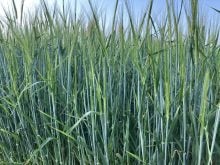It sure was a salutary summer for U.S. cattle feeders who hadn’t hedged their cattle. Fed cattle prices plunged more than US$14 per cwt live from the third week of July to the end of August. Yet the market after that was still struggling to find a bottom.
That’s certainly not how anyone expected the market to behave. Prices had come off their highs for the year in early May and declined as expected to US$119.33 per cwt live or US$198.74 per cwt dressed the week ending July 23. Prices eased the next three weeks (to just over US$115 live) but many participants felt the low was in at that level.
Read Also

The Canadian Cattle Association’s international advocacy efforts
Global ag policies affect Canadian food policy, so the Canadian Cattle Association participates in international and domestic forums
Markets, though, can confound both bulls and bears. Prices kept falling and the averages the last week of August were US$104.66 live and US$165.71 dressed. This column was written the first week of September. But the market’s direction throughout the month seemed to be as unclear as it had been in the two prior months.
How could prices drop so much when cattle feeders had continued to market cattle aggressively to keep their market-ready supplies more than manageable? This showed up in the number of cattle on feed 150 days or more at the start of each month. Analysts calculated that the number on August 1 was 74 per cent of a year earlier. The September 1 number was 82 per cent of a year earlier while the October 1 number was down 10 per cent.
These numbers suggested that cattle feeders were extremely current in their marketings and could have held out for higher money once prices reached the US$115 per cwt level. Markets, though, don’t operate just on the fundamentals. They also operate on expectation and psychology.
Live cattle futures had remained at a deep discount to cash prices throughout July and August. With up to three-quarters of all U.S. cattle-on-feed hedged, their owners took advantage of the extremely positive basis between cash and futures prices and kept selling cattle aggressively at lower and lower prices because they were still making money on their cattle.
This, though, was devastating to those with unhedged cattle as they saw their profit margins evaporate. The last week of August was the first time that most cattle sold at or below their break-even of US$102-103 per cwt live. Break-evens in September increased to more than US$108 per cwt. October’s are expected to be around US$113, November’s at US$116 and December’s at US$118. This meant most cattle feeders saw red ink in September unless the cash market rallied sharply and we will see even more red ink in the fourth quarter.
Another factor in the market’s decline is that cattle feeders gave up any leverage over packers by accepting lower prices. Wholesale beef prices had their own deep decline in July and August. But fed beef processors kept harvesting well over 500,000 steers and heifers per week because cattle costs kept going down even faster than boxed beef prices.
Packers were also able to sell the additional beef they were producing because boxed beef prices fully restored retailers’ beef margins. This allowed retailers to feature beef more aggressively in August and lower their everyday prices slightly. This helped packers sell the most beef (cuts, grinds and trim) in the third week of August since the last week of January 2015. Labour Day retail beef sales were better than last year because of the aggressive features. This trend was expected to continue through September into October. The fortunes of the beef industry thus continued to hang on consumers’ appetite for beef.
















